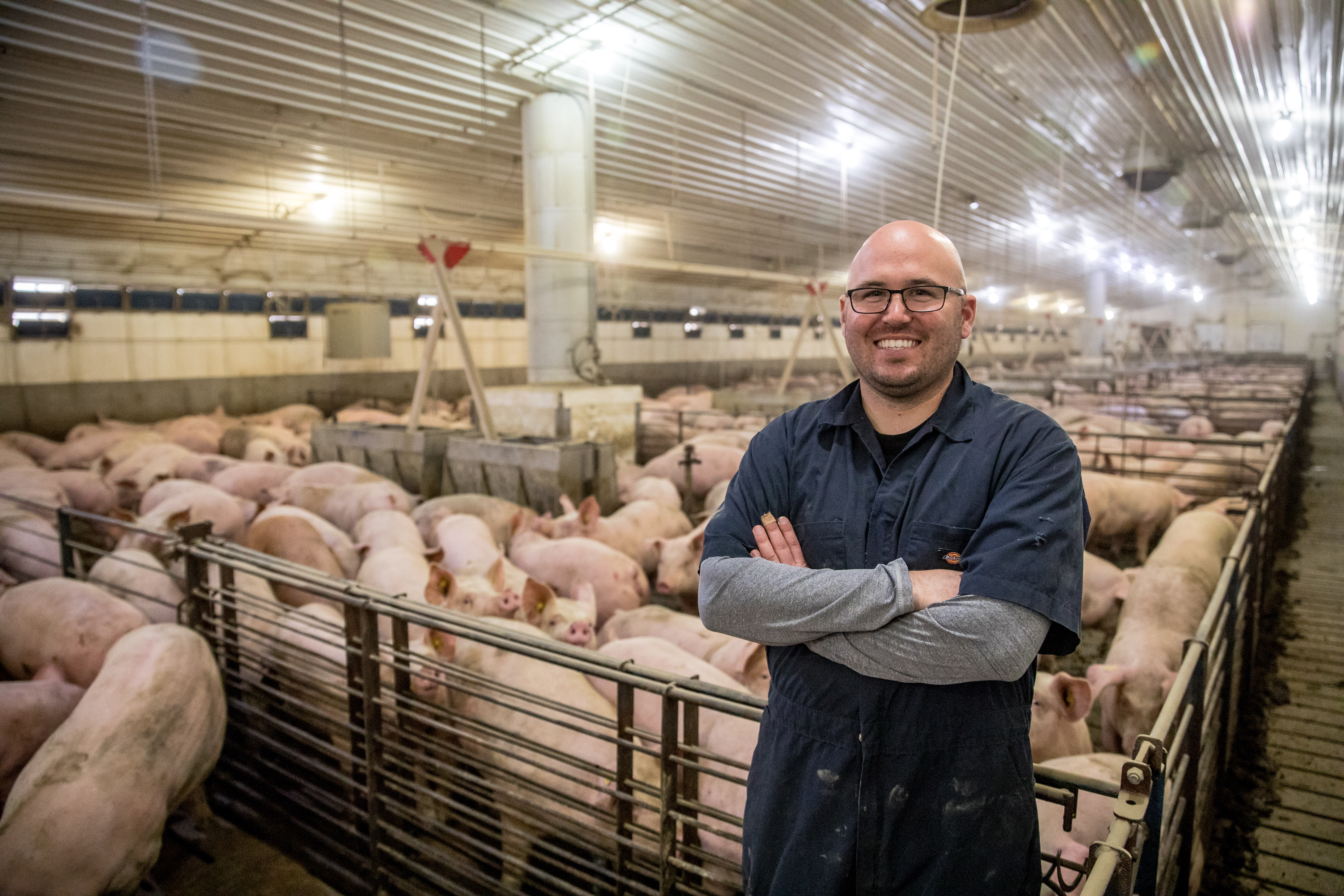A well-prepared farrowing room is critical to sow farm success, but often the task is overlooked or deemed less important than other daily chores. Follow these six steps to fully prepare and create optimal farrowing room conditions:
Clean all surfaces
Cleanliness and proper disinfection are major factors contributing to disease prevention in a sow farm. A good wash starts with a complete breakdown of the farrowing room and stalls. Then, all surfaces can be easily power washed using detergent and hot water with maximum pressure.
Wash all components of the farrowing stall and room including feeder parts, both sides of farrowing mats, floors, walls, ceilings and feed lines. All organic material, such as placenta, feed and manure, should be removed during power washing. Inspect farrowing stalls after washing and touch up any missed areas.
Disinfect to remove pathogens
Once the farrowing room is clean, use disinfectants to help eliminate pathogens and prevent disease. Ensure disinfectant is diluted properly according to the label instructions. If the disinfectant is too diluted, it won’t be as effective. A solution that’s too strong will provide no additional cleaning benefit and result in increased cost.
If the disinfectant is too diluted, it won’t be as effective. A solution that’s too strong will provide no additional
cleaning benefit and result in increased cost.
Use a foamer or a Gilmour with a foaming tip to apply disinfectant and make sure every surface is covered. Wash both sides of farrowing mats, flooring, alleyways, stalls, panels and so on. Make sure no feeders have disinfectant pooled in the bottom. Dump feeders so sows do not ingest disinfectant.
Inspect the farrowing room
After washing and disinfecting the farrowing room, allow enough time for the room and equipment to dry. Doing so helps ensure pathogens are killed before sows return to the room.
Meanwhile, inspect all farrowing stalls and repair any damage before loading. Manage maintenance and repairs each time a room gets set up to provide the best care for animals and prevent injuries. Regular maintenance also prevents wear and tear on equipment.
Inspect all ventilation/environmental components. Ensure equipment such as fans, heaters, inlets, baffles, curtains, drippers and cool cells work properly. Repair damaged flooring before loading the room. Check all feeders and waterers to ensure they are working and there are no leaking nipples/pipes, split or broken feeders, broken feed tubes, boxes or feedlines.
Watch out for piglet safety
After the room has been inspected, it’s time to make the farrowing room comfortable for sows and soon-to-beborn piglets. Make sure ad-lib feeders are set up properly. Prepare an effective safe area with a mat and heat source for piglets before farrowing. Put creep mats 12 inches (30 centimeters) from the back of the stall. Make sure there are no holes, tears or worn mats. Do not put powder on the mats before farrowing as it can reduce the mat temperature.
All heat lamps or electric mats must work properly. Set heat lamps at the correct height, centered above farrowing mats. Make sure bulbs and shades are clean to achieve proper temperature. Double-check that mats are clean on both sides. Repair any damage or broken cords.
Set farrowing room temperature
Set room temperature at 72 to 74 degrees Fahrenheit (22 to 23 degrees Celsius), according to your farm protocol. Target 90 to 95 degrees Fahrenheit (32 to 35 degrees Celsius) in creep area. Check the temperature with a heat gun prior to farrowing.
Timing is everything
The farrowing room must be set up before farrowing begins for the best odds of success. Don’t leave the task until it’s too late. Time spent preparing the room correctly saves time during farrowing. Create a clean, dry, safe and comfortable room where sows can give their litter the best start possible.
Once you’re set up for farrowing success, it’s time to focus on piglet care and weaning heavy, healthy pigs. Use these 4 cornerstones to prep for wean-to-finish excellence.






